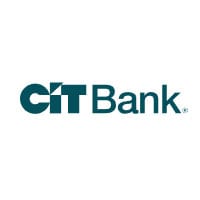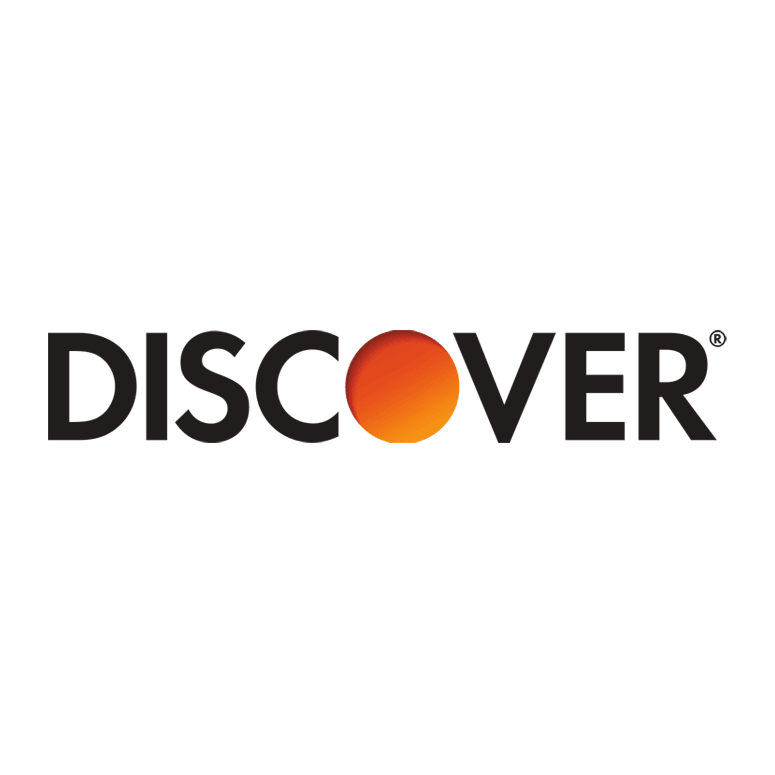Getting a student savings account is one of the best first steps to start managing your finances and building wealth for yourself – after all, it’s never too early to start saving!
While many savings accounts are on the market, I recommend looking for low entry barriers, high-interest rates, and budgeting features, as accounts with these features are the best savings accounts for students.
Many financial institutions, banks, and credit unions offer accounts with reasonable interest rates and low fees. Some even offer a dedicated student account or student offers.
Most banks also offer other products and services, including credit cards, to help you keep everything under one roof.
College students with a checking account can also link the accounts and automate savings to grow balances faster.
But all of this starts with a good savings account, which this review covers.
10 Best Student Savings Accounts of 2025
Here are the best savings accounts for students you can open today:
- 🏆 CIT Bank: 1.00%
- Discover Bank: 4.30%
- Synchrony Bank: 4.75%
- Marcus By Goldman Sachs: 4.30%
- American Express Bank: 4.25%
- Ally Bank: 4.25%
- HSBC: 5.50%
- Capital One: 0.30%
- DCU: 6.17%
- Bank of America: 0.01%
1. CIT Bank Savings Builder Account
- APY: 1.00%
- Monthly Service Fee: $0
- Minimum Opening Deposit: $100
- Minimum Account Balance: $25,000 or $100 monthly deposit
The CIT Bank Savings Builder account comes with one of the highest APY rates offered at 1.00%. However, to qualify, you must have a balance of $25,000, which can be high.
The good news for students is that you can substitute the minimum account balance requirement for a monthly deposit of $100 or more. This is a great option if you haven’t saved money yet but want to start.
Opening the account is easy, and there are numerous perks to enjoy.
There are no maintenance fees or account opening fees, and the interest compounds daily to maximize how much you earn from your savings.
Students also get access to the CIT mobile banking app, and the bank is FDIC-insured.
Pros:
- Easy to qualify for the higher-than-average APY
- Access via online or mobile banking
Cons:
- Must ensure you always have a $100 monthly deposit, or you’ll lose the higher APY
2. Discover Bank Online Savings Account
- APY: 4.30%
- Monthly Fee: $0.00
- Minimum Opening Deposit: $0.00
- Minimum Account Balance: $0.00
Discover Banks Online Savings Account offers a 4.3% APY, no minimum account balance, and no fees.
Opening your Discover Bank Online Savings account couldn’t be easier and can be completed in 3 simple steps.
You can open the account online by providing basic information such as your name, address, and SSN (Social Security Number).
You can transfer funds when you apply or after opening the account. Once completed, you’ll receive a confirmation via email from Discover Bank.
The best part about this savings account for students is there are no fees, and you don’t have to worry about maintaining a specific balance. This includes NSF (insufficient funds) fees and account closing fees.
Discover Bank charges no fees, which is always nice as it can help you keep expenses to a minimum.
Pros:
- No minimum balance required
- Higher than average APY
- No monthly fees to consider
Cons:
- No branches to visit
- No ATM access
3. Synchrony Bank
- APY: 4.75%
- Monthly Fee: $0.00
- Minimum Opening Deposit: $0
- Minimum Account Balance: $0
Synchrony Bank offers a unique opportunity in its high-yield savings account – ATM access. There’s no fee to use Plus or Accel ATMs, and they’ll refund any ATM fees ATM owners charge up to $5 per month.
Synchrony Bank not only pays a much higher-than-average APY but also offers a savings calculator to help students see how much they must save to reach their goals.
Synchrony Bank is a member of the FDIC so all deposits are protected up to $250,000.
Pros:
- High APY
- No minimum balance
- ATM access
Cons:
- No physical branches
4. Marcus by Goldman Sachs High-Yield Online Savings Account
- APY: 4.30%
- Monthly fee: $0.00
- Minimum Opening Deposit: $0.00
- Minimum Account Balance: $0.00
Marcus, by Goldman Sachs, offers a high-yield online savings account with an APY rate of 4.3%. This rate is well above the national average and can help your savings grow much faster.
The account has no fees, including no fees account opening or monthly maintenance fees. This enables you to avoid losing the money you’ve saved just to open the account.
You can open an account online, saving the hassle of visiting a branch. No minimum amount is required to open the account, so you can get started immediately.
Of course, you’ll need to provide some personal details during the application process, but this is nothing unusual.
Once you set the account up, you can enjoy same-day transfers, link accounts held with other banks, and access a contact center that’s not only open 24/7 and U.S.-based.
The account is also insured by the FDIC, so you can rest easy that your money is safe.
Pros:
- APY that’s 8x the national rate
- No minimum deposit
- No fees
Cons:
- No access to physical branches
- No cash deposits
5. American Express Bank Online Savings Account
- APY: 4.25%
- Monthly Fee: $0.00
- Minimum Opening Deposit: $0.00
- Minimum Account Balance: $0.00
The American Express Bank offers one of the best student savings accounts with many key benefits, starting with an APR (Annual Percentage Yield) of 4.25%. This is much higher than the national average.
There are no monthly maintenance fees and minimum balance to keep, meaning you’ll get a great rate regardless of how much you save.
If you already have a current account, you can easily link it to the American Express Bank savings account and fund transfers 24/7. All you need is your account and routing number, and you’re good to go.
Interest compounds daily and AMEX credits your account monthly.
AMEX is a member of the FDIC, meaning you’re insured up to $250,000.
Pros:
- High APY
- Daily compounded interest
- No minimum opening balance
Cons:
- No physical branches
- No ATMs
6. Ally High-Yield Savings Account
- APY: 4.25%
- Monthly Fee: $0.00
- Minimum Opening Deposit: $0
- Minimum Account Balance: $0
Ally Bank offers a rate that’s 5x the national average and it includes savings buckets to help students save for specific goals and options for round-ups, and recurring transfers to increase your savings without any legwork.
It also offers the option for ‘surprise savings, ‘which is money they feel is free to move to savings after assessing your spending habits.
The Ally Bank account has no minimum opening deposit requirements and doesn’t charge monthly fees. It’s FDIC-insured, covering up to $250,000 in deposits per depositor.
Pros:
- No monthly fees
- More opportunities for savings, including buckets and surprise savings
- No minimum balance
Cons:
- No physical branches
- No cash deposits
7. HSBC Everyday Savings Account
- APY: 5.50% introductory rate, then 3.3% variable
- Monthly Fee: $0.00
- Minimum Opening Deposit: $1
- Minimum Account Balance: $1
HSBC offers several different savings accounts, including the HSBC Everyday Savings account.
There is a minimum opening balance requirement of $1 when opening online – which most students can afford!
The Everyday Savings Account is available to everyone and has low barriers to entry, while providing great features.
You get free access to internet banking as well as HSBC Mobile Banking. To help you stay on top of your finances, you can also set up automatic savings for any amount and for how long you like.
You can easily open an account online and have 24/7 access to phone banking.
Pros:
- Open to anyone who wants to save
- No monthly fees
- High introductory rate
Cons:
- Regular rate falls after first three months
- No ATM card
6. Capital One Kids Savings Account
- APY: 0.30%
- Monthly Fee: $0.00
- Minimum Opening Deposit: $0.00
- Minimum Account Balance: $0.00
When looking for the best student savings accounts, you may want an account for young children. Fortunately, the Capital One Kids Savings Account is for younger students, including those in high school or younger, and it pays a rate of 0.30%.
Since this account is only available to those under 18, parents or other adults need to co-sign as joint account holders.
Once the student reaches 18, the account will automatically switch to a Capital One 360 Savings Account.
The account has many useful features to help eligible students learn how to manage their money better.
These features include My Savings Goals, allowing you to set up and track goals, and an Automatic Savings Plan to set up regular deposits and increase your child’s savings.
The account also has a mobile banking app with several parental controls.
Children can open an account online or by visiting one of the Capital One bank branches or Cafes.
Pros:
- Many savings tools for young kids
- No monthly fees
- Easy for kids and parents to work together toward savings goals
Cons:
- Only for students 18 or younger
- No debit card is available
9. DCU Primary Savings Account
- APY: 6.17% for the first $1,000 then 0.15%
- Monthly Fee: $0.00
- Minimum Opening Deposit: $5.00
- Minimum Account Balance: $0.00
DCU’s Primary Savings account offers a higher interest rate of 6.17%, which is much higher than what the competition offers, but there is a catch.
The 6.17% rate only applies to the first $1,000.00 in your account. Anything above that gets a 0.15% rate, so you’ll need to work out the effective rate you’ll earn, depending on how much money you have saved in the account.
Computing the effective rate can be complicated, but DCU offers a handy savings calculator to quickly determine how much you could save over time.
The account also has a very low minimum opening deposit, and there is no minimum account balance required. This makes the account ideal for those just starting to save money.
Pros:
- High initial APY on up to $1,000
- Low opening balance requirement
- No monthly fees
Cons:
- Low APY on balances over $1,000
- Complicated APY calculations
10. Bank of America Advantage Savings
- APY: 0.01%
- Monthly Fee: $0.00
- Minimum Opening Deposit: $100
- Minimum Account Balance: $500 or more
At 0.01%, the starting APY rate is not the best, but Bank of America is quite accessible and offers higher APY rates for those enrolled in the Preferred Rewards program; however, qualifying for this might not be so easy for students.
The Bank of America Advantage Savings usually carries a monthly maintenance fee of $8.00, but qualifying students get a fee waiver.
Some of the great features the Bank of America account includes are a cashback program, paying up to 10% back on certain purchases, and Keep the Change, which rounds up debit card purchases with the difference going straight into your bank account, where it earns interest.
The account is FDIC-insured and comes with many features, including overdraft protection and custom alerts.
Pros:
- Students automatically get a monthly fee waiver
- Opportunity to earn cashback
Cons:
- Low APY
FAQs
Is it good to have a savings account as a student?
The earlier kids learn how to save, the better. Finding the best student savings accounts helps kids learn how to save and see the progress toward their goals. Learning the value of compound interest early ensures kids can carry good personal finance habits into their adulthood, making saving natural.
What should a college student look for in a bank account?
Before opening one, college students should determine which features they want from a bank account. For example, consider how you’ll access the funds. If you need regular access, you may want an account with an ATM card, but if you want an account you don’t touch, you may not want an ATM card.
Other factors to consider include the APY, monthly fees, and the required minimum balance. If you want a bank account with extra features, such as a savings calculator or savings buckets, prioritize those features, too.
What makes a college student savings account different?
College students often benefit from not paying monthly maintenance fees and having all account minimums waived. Many banks make it easy for college students to save money and reach their goals without juggling the expense of having a bank account.
Finding The Best Student Savings Account For You
A good high-yield savings account can be your first step toward a more financially responsible future. Personal finance is a critical topic, and the earlier you start, the more benefits you can get.
When choosing the best student savings accounts, there isn’t a right or wrong answer. This is because every one of us has different financial goals and requirements. This means that what works for me might not work for you, making choices a bit more personal.
Of course, always focus on the interest rates. High rates mean your savings will grow faster.
You should also pay attention to fees, such as overdraft fees and account management fees.
Also, consider features you want, such as the ability to automate a monthly direct deposit into your account, as this will help you ensure you continue to save. Banks with robust mobile banking apps are always a good option.
Of course, it’s also best if the bank or financial institution offers a student checking account or a money market account, as this will allow you to keep everything under one roof.







No comments yet. Add your own